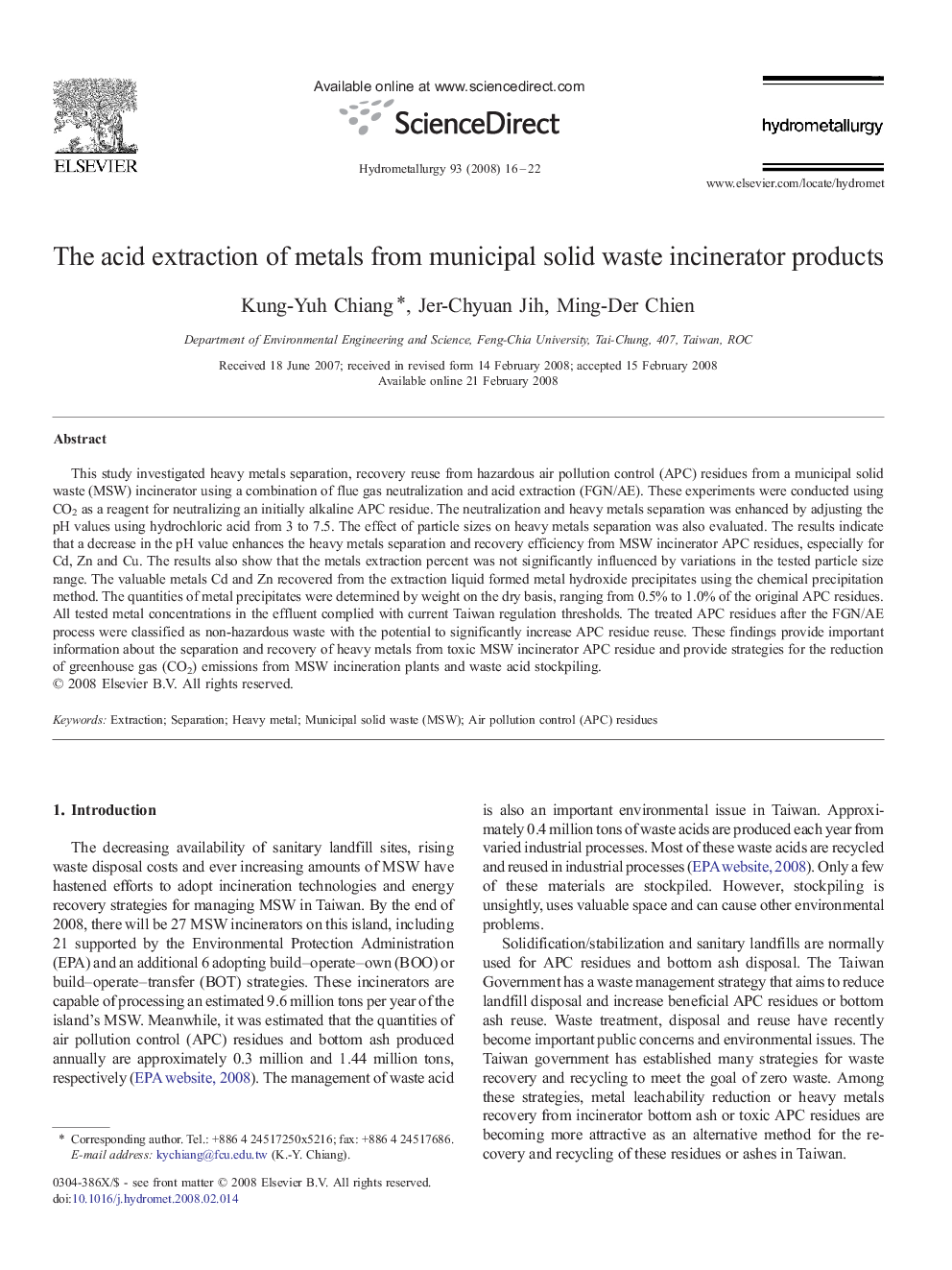| Article ID | Journal | Published Year | Pages | File Type |
|---|---|---|---|---|
| 213182 | Hydrometallurgy | 2008 | 7 Pages |
This study investigated heavy metals separation, recovery reuse from hazardous air pollution control (APC) residues from a municipal solid waste (MSW) incinerator using a combination of flue gas neutralization and acid extraction (FGN/AE). These experiments were conducted using CO2 as a reagent for neutralizing an initially alkaline APC residue. The neutralization and heavy metals separation was enhanced by adjusting the pH values using hydrochloric acid from 3 to 7.5. The effect of particle sizes on heavy metals separation was also evaluated. The results indicate that a decrease in the pH value enhances the heavy metals separation and recovery efficiency from MSW incinerator APC residues, especially for Cd, Zn and Cu. The results also show that the metals extraction percent was not significantly influenced by variations in the tested particle size range. The valuable metals Cd and Zn recovered from the extraction liquid formed metal hydroxide precipitates using the chemical precipitation method. The quantities of metal precipitates were determined by weight on the dry basis, ranging from 0.5% to 1.0% of the original APC residues. All tested metal concentrations in the effluent complied with current Taiwan regulation thresholds. The treated APC residues after the FGN/AE process were classified as non-hazardous waste with the potential to significantly increase APC residue reuse. These findings provide important information about the separation and recovery of heavy metals from toxic MSW incinerator APC residue and provide strategies for the reduction of greenhouse gas (CO2) emissions from MSW incineration plants and waste acid stockpiling.
